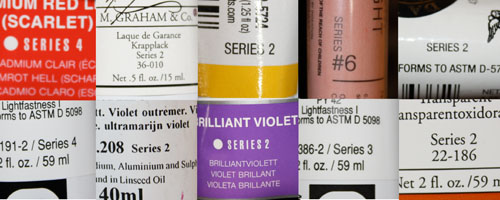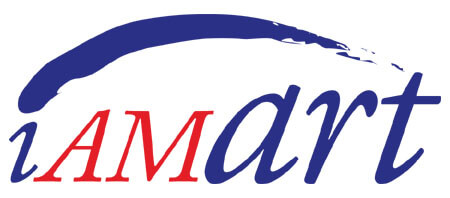paints: series numbers
what do the numbers on tubes mean?

Paint manufacturers generally group their selection of artist-grade paints into several distinct series, according to the cost of the pigments used in each color of paint. These series are marked on the tube, generally with numbers (series 1, series 2, etc.), or sometimes with letters. Paints with lower series numbers are less expensive, while higher series numbers are more expensive.
Manufacturers use series numbers because there can be big differences in the costs of pigments. The natural mineral-pigments in colors like cobalt, cadmium and vermillion are more rare than other pigments, expensive to extract from the ground and process into refined pigments, so they have higher series numbers, which reflect their higher price. Whites, blacks, earth tones, and many synthetic pigments are more plentiful, less costly to produce and, therefore, have lower series numbers.
Importantly, lower series number paints, while they may be cheaper, are not necessarily lesser quality. Remember that a manufacturer’s series-numbered paints are all artist-grade paints, as opposed to student-grade paints. Artist-grade paints contain larger amounts of high-quality pigments as well as better quality vehicles (binders). So, while naphthol red, labeled by some manufacturers as series 2, is less expensive than cadmium red, labeled by some manufacturers as series 5, the naphthol red is still a high-quality paint that can justify its place on the artist’s pallets.
When buying paints, series numbers make pricing easy, but the more significant properties of a paint are better determined by other information found on the tube, such as the pigment’s color index code, its lightfastness, the opacity of the paint, and the makeup of the vehicle in which the pigment is suspended.
